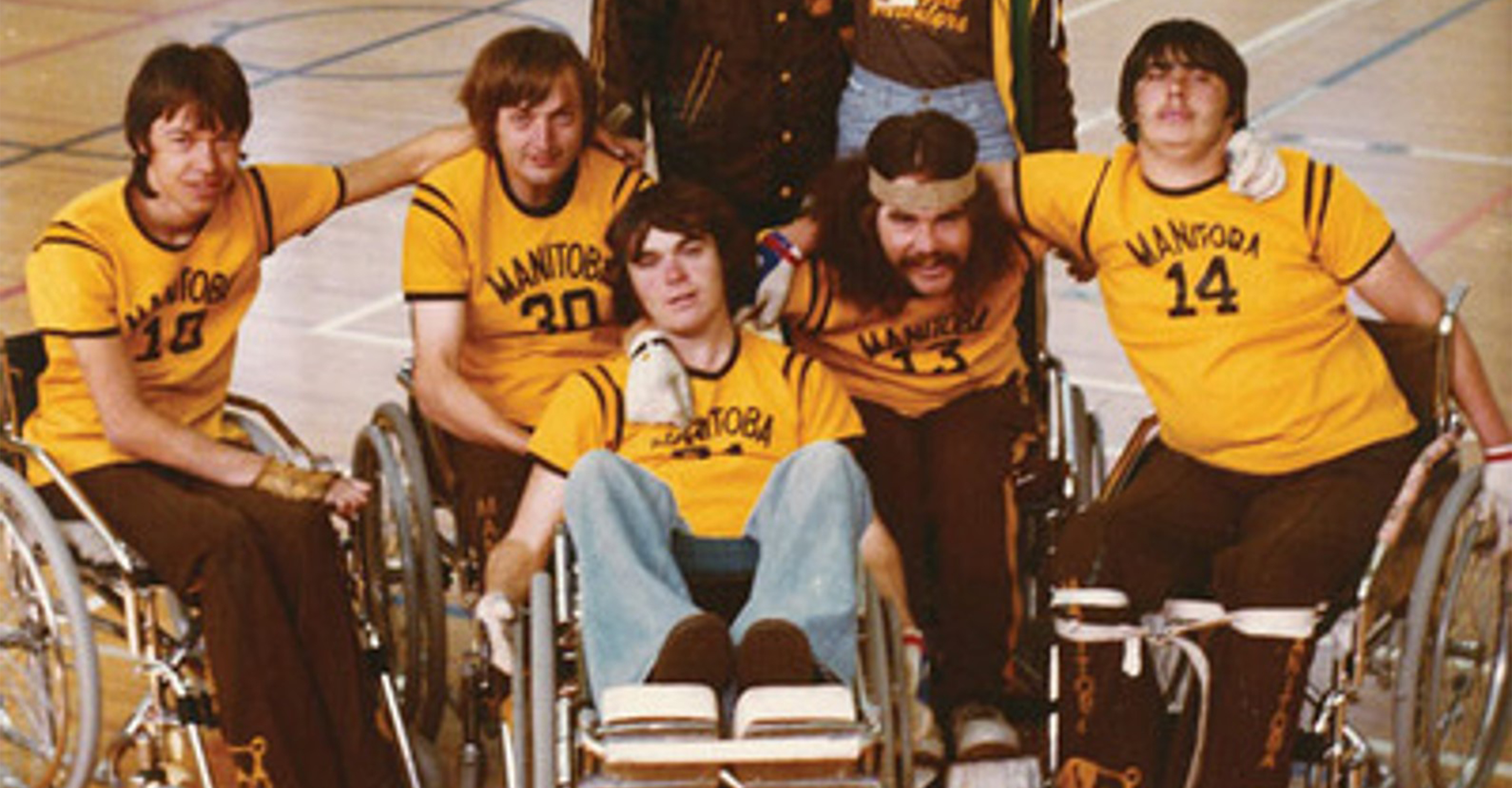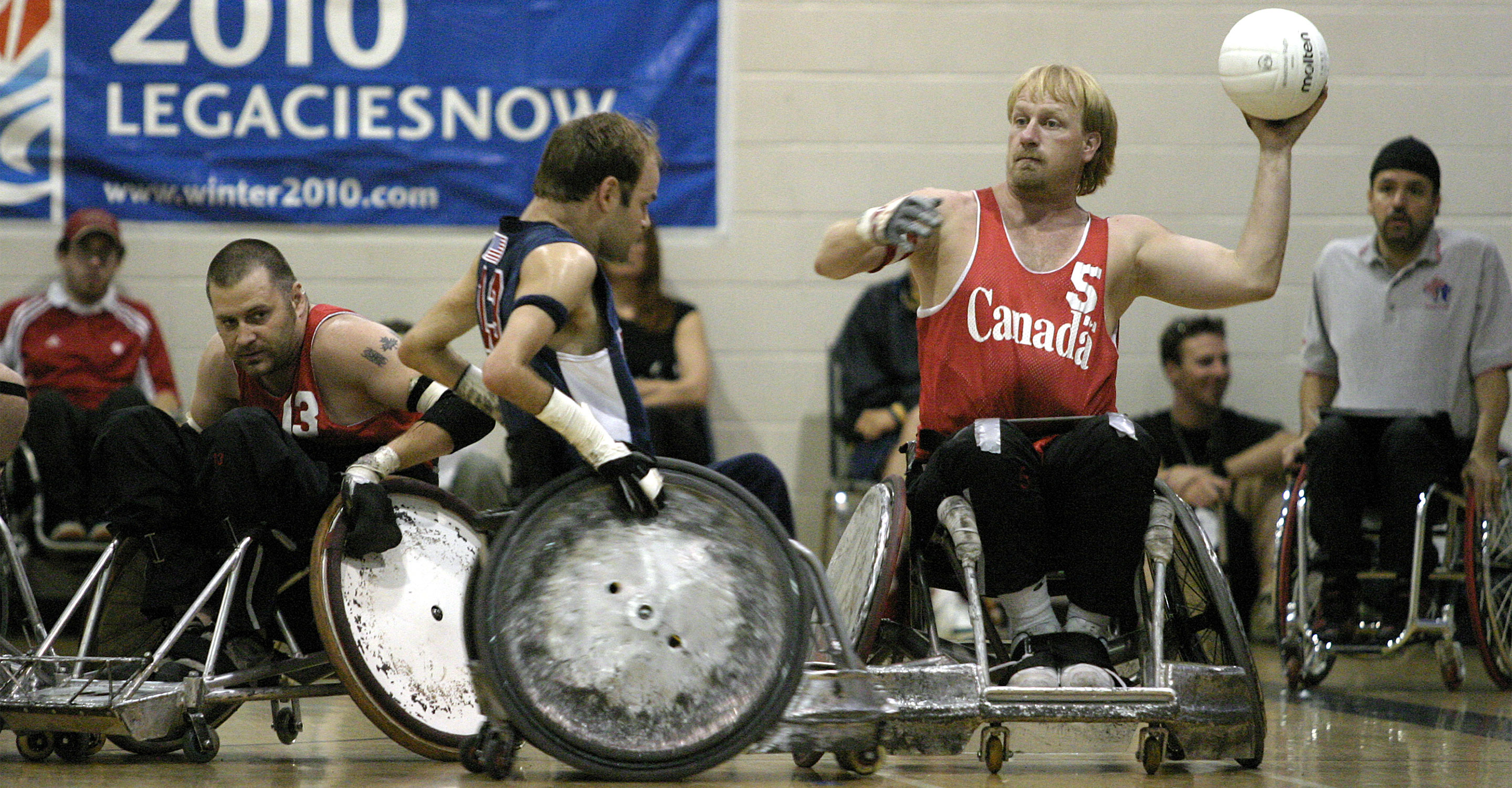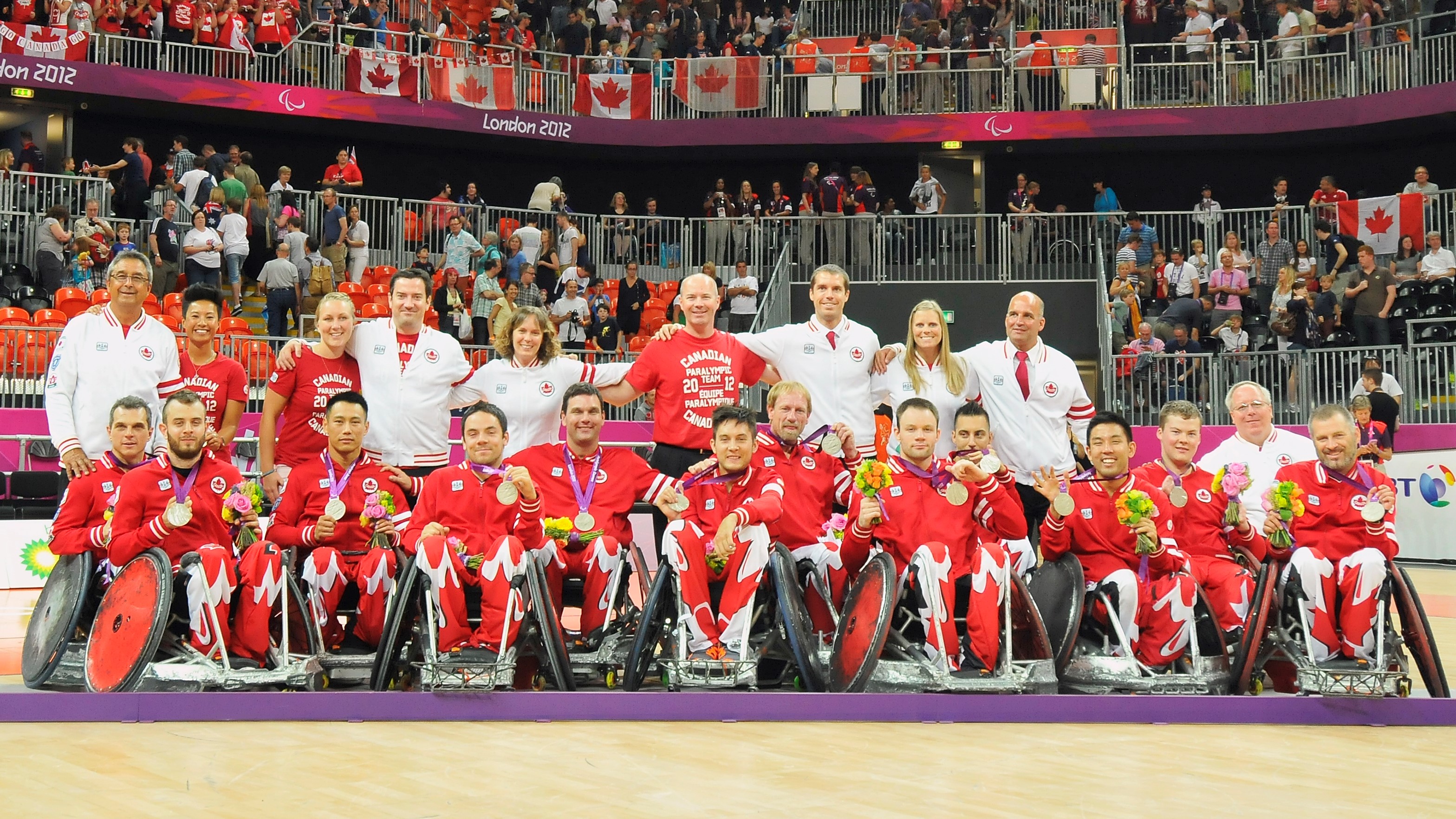The Sport
Wheelchair rugby is a team sport for male and female athletes with a mobility-related disability in at least three limbs. It is a unique sport created by athletes with a disability that combines elements of basketball, handball, and ice hockey.

What is Wheelchair Rugby?
The object of the game is to carry the ball across the opposing team’s goal line. Two wheels must cross the goal line for a goal to count, and the player must have firm control of the ball when he or she crosses the line. All wheelchair rugby players compete in manual wheelchairs. Players must meet the minimum disability criteria of the sport and must be classifiable under the sport classification rules. For Rules & Equipment, click here.
Who Can Play?
To be eligible to play, individuals must have a disability that affects both the arms and the legs. They must also be physically capable of propelling a manual wheelchair with their arms. Athletes with neurological disabilities must have at least three limbs with limited functions; athletes with non-neurological disabilities must have limited function in all four limbs. The majority of wheelchair rugby players have spinal cord injuries that have resulted in full or partial paralysis of the legs and partial paralysis of the arms. Other disability groups who are represented include polio, cerebral palsy, some forms of muscular dystrophy, dysmelia, amputations, and other neurological conditions such as Guillain-Barré Syndrome. Men and women are classified equally and compete on the same teams; there are no separate men’s and women’s competitions. However, teams are allowed an additional 0.5 points for each woman who is playing in the line-up on the court.

History
Wheelchair Rugby was invented in 1977 in Winnipeg, Canada by a group of quadriplegic athletes who were looking for an alternative to wheelchair basketball. They wanted a sport which would allow players with reduced arm and hand function to participate equally. The sport they created, originally called Murderball, is now known as Wheelchair Rugby.
The sport first appeared outside of Canada in 1979, at a demonstration at Southwest State University in Minnesota. The first Canadian National Championship was held that same year. The first team in the United States was formed in 1981, and the first international tournament, bringing together teams from the United States and Canada, was held in 1982. Throughout the 1980’s, other local and national tournaments took place in various countries. The first international tournament with a team from outside North America was held in 1989 in Toronto, Canada. With teams from Canada, Great Britain and the United States, this was a breakthrough for developing international competition and cooperation. In 1990, Wheelchair Rugby appeared at the World Wheelchair Games as an exhibition event, which helped fuel the sports rapid growth and popularity internationally.

The “Founding Fathers” of Murderball were Gerry Terwin, Duncan Campbell, Randy Dueck, and Paul LeJeune
In 1993 with 15 countries actively participating, the wheelchair rugby was recognized as an official sport for athletes with a disability, and the International Wheelchair Rugby Federation (IWRF) was established as a sport section of the International Stoke Mandeville Wheelchair Sports Federation. That same year seven countries participated at the Stoke Mandeville International World Wheelchair Games.
In 1994, Wheelchair Rugby was officially recognized by the International Paralympic Committee (IPC) as a Paralympic sport. The first Wheelchair Rugby World Championships were held the following year in Nottwil, Switzerland with eight teams competing. In 1996 Wheelchair Rugby was included as a demonstration sport in the Atlanta Paralympic Games with 6 countries competing. In 1998, Toronto, Canada hosted the second IWRF Wheelchair Rugby World Championship, and 12 countries attended.

Canada’s Garett Hickling against the United States in 2010
In 2000, Wheelchair Rugby was included for the first time in the Paralympic Games competition program as a full-medal sport at the Sydney 2000 Paralympic Games. It has since been featured at every Summer Paralympics and is included in the competition program for the 2020 Games in Tokyo. World Championships and the Paralympics are held every 4 years.
Currently, there are more than forty countries that actively participate in the sport of wheelchair rugby, or who are developing programs within their nation. The IWRF includes three zones: The Americas, with six active countries; Europe, with fourteen active countries; and Asia-Oceania, with six active countries. The next IWRF Wheelchair Rugby World Championship will be held in Vejle, Denmark in October 2022.
Canada – Major International Results
1995 World Championships: 2nd
1996 Atlanta Paralympic Games: 2nd
1998 World Championships: 3rd
2000 Sydney Paralympics: 4th
2002 World Championships: 1st
2004 Athens Paralympics: 2nd
2006 World Championships: 3rd
2008 Beijing Paralympic Games: 3rd
2010 World Championships: 5th
2012 London Paralympic Games: 2nd
2014 World Championships: 2nd
2015 Toronto Parapan American Games: 1st
2016 Rio Paralympic Games: 4th
2018 World Championships: 6th
2019 Lima Parapan American Games: 2nd
2020 Tokyo Paralympic Games: 5th
2022 World Championships: 5th
2023 Santiago Parapan American Games:

LONDON, ENGLAND 09/09/2012 Team Canada receives the silver medal in Wheelchair Rugby at the London 2012 Paralympic Games in the Basketball Arena. (Photo by Matthew Murnaghan/Canadian Paralympic Committee)



